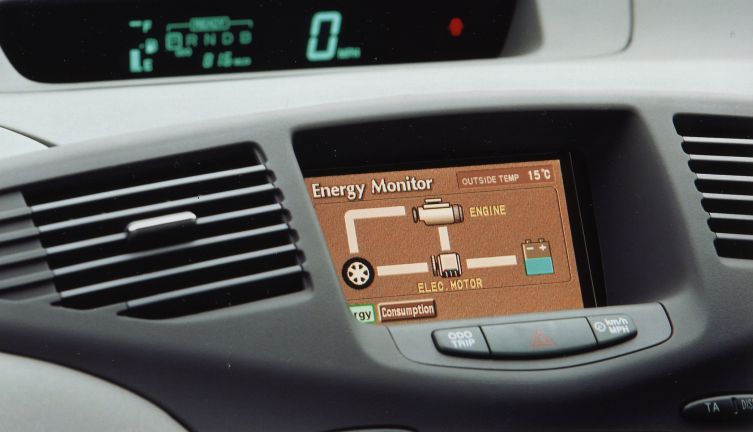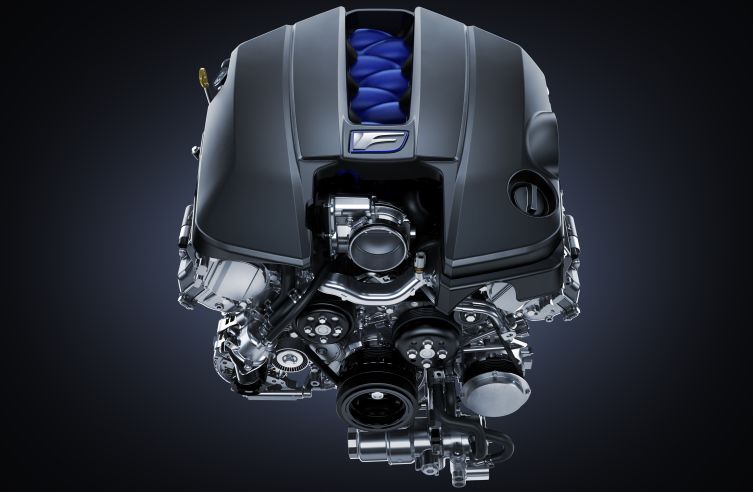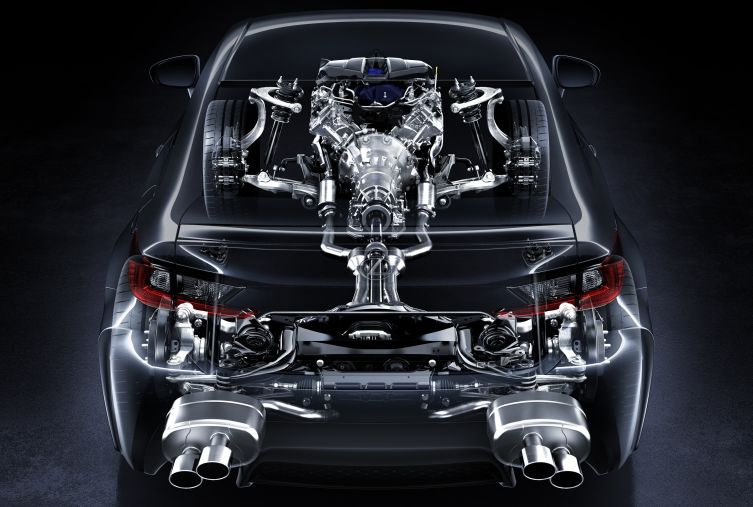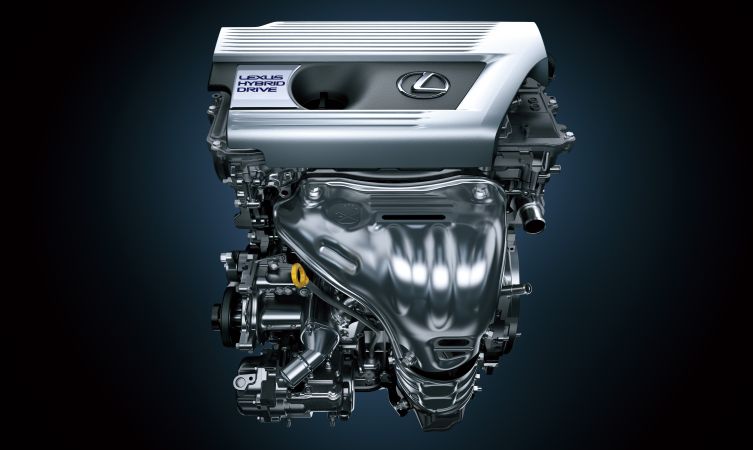Most spark ignition engines since the dawn of motoring have employed a four-stroke thermodynamic cycle developed in the late 19th Century by a German engineer named Nikolaus Otto. But in more recent years, a modified version of this ‘Otto’ cycle has grown in popularity.
Commonly known as the ‘Atkinson’ cycle, it has been employed in all vehicles with Lexus Hybrid Drive technology and has now been adopted in some of the manufacturer’s latest high-performance models, such as the Lexus RC F.
Why is this the case, and what is the difference between these two cycles?
The Otto Cycle
Four-stroke engines have four separate phases within a traditional Otto cycle, produced by two revolutions of the crankshaft and precise valve and ignition timing. As you can see from the animation below, these phases are: 1) intake, 2) compression, 3) combustion and 4) exhaust. Each corresponds to a full piston stroke inside the cylinder.

The cycle begins with a downward piston stroke, which draws a mixture of air and vapourised fuel through the intake port into the combustion chamber. The upward stroke of the returning piston compresses this mixture to around one-tenth of its volume, at which point it is ignited by the spark plug. This explosion drives the piston downward in a stroke that gives the engine its thrust. The final return stroke of the cycle evacuates the spent gases via the exhaust port so that the process can begin again.
But while this relatively straightforward cycle produces a satisfactory power output, it is not the most fuel-efficient means of generating power from a four-stroke piston engine. That accolade goes to engines running the Atkinson cycle.
The Atkinson Cycle
Patented in 1882 by British engineer James Atkinson, the Atkinson cycle significantly improved the fuel-efficiency of a four-stroke spark ignition engine through one particularly ingenious modification.
The four basic phases of the Otto cycle remained but Atkinson introduced a new timing sequence to delay the closing of the intake valve during the compression stroke. Keeping the intake valve open slightly longer effectively reduced the engine’s displacement during the intake cycle but retained the full ratio of expansion in the combustion or power stroke.
In simple terms, the Atkinson cycle was designed to minimise the use of fuel during the intake stroke yet exploit the part of the cycle that generates power.
How a modern Atkinson Cycle engine works
James Atkinson’s original development engine used complex mechanical linkages to produce different piston stroke ratios from the same crankshaft revolution. Though effective and incredibly clever, the design was not cost-effective for mass production. What’s more, the benefits in fuel-efficiency could only be achieved at the cost of some power – a result of the reduced engine displacement during the intake stroke. Because of these issues, Atkinson’s ingenious cycle was largely forgotten about for the best part of a century.
Fast-forward to the mid-1990s and Toyota engineers had a eureka moment when they realised that they could now generate the most vital, fuel-saving function of the Atkinson cycle engine – the delayed closing of the intake valve during the compression stroke – through non-mechanical means. This became possible with new variable valve timing technology, which used hydraulics to actuate the camshaft position and alter the timing of the intake valves.

Meanwhile, emerging hybrid drive technology was found to be the perfect means to address the Atkinson’s characteristic power shortfall. Battery-fed electric motors were used to assist the petrol engine when necessary but also provide an independent source of motivation. After all, the most effective method of fuel-saving is not to have the engine running in the first place!
Power and efficiency
The first production car with a simulated Atkinson-type valve action and hybrid drivetrain was the 1997 Toyota Prius, while the first adoption of this technology by Lexus was found in the RX 400h of 2005. So successful has it been that every subsequent model with Toyota’s Hybrid Synergy Drive or Lexus Hybrid Drive technology has adopted the same fuel-efficient cycle and architecture.

Further development of this valve-sequencing technology is experienced in the new high-performance yet emission-compliant Lexus RC F. The 471bhp V8 engine in this coupe (see above) uses new VVT-iE electric motor-driven variable valve timing to switch imperceptibly between combustion cycles – the more fuel-efficient Atkinson cycle when cruising and the traditional Otto cycle to deliver thrilling power.
Who would have thought that an engine technology that is over 130 years old could enable the modern Lexus driver to have his cake and eat it?
Car Throttle explains in its own style just how the Otto and Atkinson cycles work in its review of the RC F. Have a look below.






Can you correct the intro to the piece on the Atkinson cycle please. There have been lots of two-stroke engines as well!
Paul, thanks for your attention to detail. We have altered the introduction to accommodate your comment.
How much extra power generated in Atkinson cycle comparing same capacity of Otto cycle
Hi there,
Thank you for getting in touch. The Atkinson cycle produces slightly less power as there is less fuel in the mixture to burn in the power stroke. It is mainly used for fuel economy, rather than power. Hope this helps.
Why do you leave the intake valve open longer to reduce the intake stroke size? Why not shut it off early?
Also, if for example, a car has the intake stroke only half of the power stroke (say you closed the valve half way down the intake stroke) making a a 2.5L capacity engine only suck in 1.25L, but have 2.5L in power stroke, Would you call this engine 2.5L or 1.25L!?!?
Hi Matt,
Thanks for your message. Atkinson’s design is that the engines have an expansion stroke that is longer than the compression stroke, and by this method the engine achieves greater thermal efficiency than a traditional piston engine. The video on the blog post should explain this in more detail.
The actual capacity is the combustion chamber, so although the piston will have a longer expansion stroke, the compression stroke is used to dictate the capacity, just as a conventional engine, before combustion and the power stroke occurs. Therefore, based on your example the engine capacity will be 2.5l not less.
We hope this helps.
Thanks.
Okay, but is it possible to make a turbocharged Atkinson engine? That will not only increase power a little bit but also increase efficiency. Unfortunately, that may reduce reliability due to how it’s tuned. Is it possible to use Atkinson engines in, for example, high-performance hatchbacks and use the Prius/CT200h Hybrid technology at the same time but still use a 6-speed manual gearbox for maximum driver-engine control?
Hi Luke,
Thanks for your message. Yes, it is technically possible to make a turbocharged Atkinson engine. However, it is not something we are planning on introducing.
A manual transmission is not compatible with our hybrid system, which is why we use a e-CVT transmission. You would also need to consider the additional weight and packaging of a hybrid system negatively affecting the performance of a car like that. Saying that, a lot of work is being done in the world of Motorsport introducing hybrid powertrains to things like the BTCC and WRC in the near future. With the whole industry moving toward electrification across entire model ranges it will be important to diversify the application of hybrid technology.
Thanks.
Isn’t it that the air and fuel mixture going back before the closure of the valve during compression gets wasterd?
Hi Rook.
Thanks for your message. In the Atkinson cycle, the mixture doesn’t get wasted as it will be used up as the next cycle happens.
Hope this helps.
Is the Lexus is300h 2.5 atkinson motor with direct injection? Does it have problems with carbon buildup?
Hello Dirk,
Thank you for your comment.
Our hybrids use variable valve timing, which means they can switch between Otto and Atkinson combustion cycles.
Thanks.
I keep wondering why I keep reading that the compression ratio for the Lexus Hybrid in the Atkinson cycle is 13:1. This is higher than the compression ratio for a typical Otto engine and thus gives the requirement for the use of premium (high octane) fuel for the Lexus Hybrid. I thought that an Atkinson engine would have a lower compression ratio that a standard Otto engine. Is there something else going on here?
By the way, the video on this page (the one that has an animation of the Atkinson cycle) doesn’t work. When I click on it, it says “Video Unavailable – this video is private”.
Hello Ray,
Thank you for contacting us.
Our technical team have advised that the Atkinson cycle engine has a higher compression ratio and the expansion ratio will be higher still, due to delayed closing of the intake valve during the compression stroke.
An Atkinson-cycle engine thus requires less energy to compress the mixture. Also, the pressure prior to the combustion is lower, which makes it possible to increase the compression ratio too with no risk of engine knocking.
Regarding the video, we have now rectified this.
Thanks.
Would the atkinson cycle engine in the RX benefit from use of higher octane 98/99 ‘super’ fuel or would it be a waste of money, other than the extra additives/detergents. Thanks.
Hello Karl,
Thank you for your question.
There might be some benefits from using higher octane fuel.
However, you can consult your Owner’s Manual for the recommended fuels for your vehicle, where lower rated fuel is also listed.
You can find full details of the fuels recommended for your vehicle in your manual: https://www.lexus.co.uk/forms/manuals/owners-manual.
Thanks.
Hello! I was wondering where the Atkinson cycle gets its working fluid from. Is it from the air through the valves? If the Atkinson cycle is considered a closed cycle, does the working fluid just cycle through over and over again? And what is the working fluid in, for example, an Lexus NX (AZ20) 450h+ engine?
Hello Vivian, thanks for your question.
Our Technical Team have advised that there is no fluid used in an Atkinson Cycle Engine.
Thanks.
Hi there.
Re hybrid drive. If one accelerates with a heavy foot, the increase in speed is not commensurate with the rise in the rev. rate. I assume that much of this energy provides a boost to the batteries, but where does that extra mechanical movement go? I can’t believe that it would be belt slip, that would be too wasteful, not to mention destructive. Is there a form of fluid connection, such as a torque converter with an adjustable waste-gate, although that would also seem to be wasteful?
Hello Peter, thanks for getting in touch.
Please see the following explanation supplied by our Technical team below:
‘The drive from the engine goes through a damper plate and then through a Splitting device.’
Hope this helps. Please let us know if you have any further queries.
Thanks.